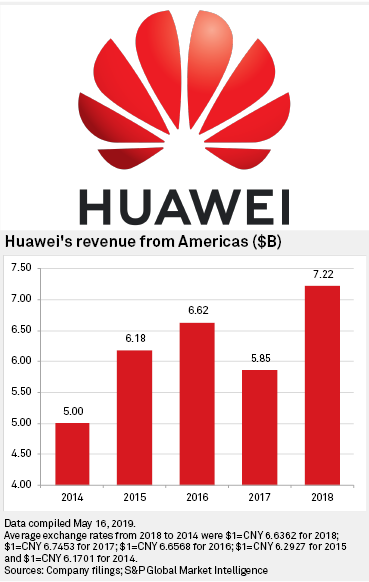In the wake of recent U.S. government actions to prevent future use of telecommunications equipment from certain international sources, security experts said risks remain for rural carriers continuing to use equipment from Huawei Technologies Co. Ltd. However, removing it may not be a top priority for the government.
On May 15, President Donald Trump signed an executive order that declared a national emergency to prevent the acquisition of information and communications equipment from countries posing a national security threat. On the same day, the U.S. Department of Commerce announced it was placing Huawei and its affiliates on its "entity list," which bans the sale or transfer of U.S. technology to anyone on the list without government approval.
The executive order only applies to transactions initiated, pending or completed after the president signed the order. Some rural telecom providers with tight budgets are already using Chinese equipment. The Rural Wireless Association, a trade group, told the U.S. Federal Communications Commission in December 2018 that at least 25% of its carrier members rely on equipment that could be perceived to pose a national security threat to communications networks or the communications supply chain.
 |
While it is optimal to remove the equipment from existing networks, it will ultimately be phased out over the next few years anyway, Peter Harrell, an adjunct senior fellow at the Center for a New American Security, a Washington, D.C.-based think tank, said in an interview. He previously worked on counter-threat finance and sanctions in the U.S. State Department's Bureau of Economic and Business Affairs.
Timothy Heath, a senior international defense researcher at the RAND Corporation with extensive experience in analyzing Chinese security issues, said the Chinese government may not value the types of networks where Huawei is currently deployed.
"A lot of these are in some small, small, town or rural network – it's not really a top priority target for the Chinese government," said Heath in an interview. "I think what they would prize is access to networks close to U.S. military facilities, installations, or government-related networks."
However, "the fact that some of these networks will continue to have Huawei technology raises the risk down the road that if U.S.-China relations sour even more and the Chinese government feels it can gain some valuable intelligence … it could use Huawei-integrated networks to facilitate that," he said.
Heath cautioned that the U.S. does not have evidence that Huawei is currently carrying out espionage or other state-directed activities through its networks.
Harrell added that there is an additional question about whether Huawei even has the technical capability to exfiltrate data from existing U.S. 4G networks to China. "There's clearly a risk of it, but whether they can, in fact, do it, we don't know," he said.
It is uncertain whether and how the U.S. government will ultimately force rural carriers to remove existing Huawei equipment. One plan under consideration from the FCC would prevent telecom providers from using the agency's Universal Service Fund to buy equipment or services from a communications equipment or service provider identified as posing a national security risk. The program funds telecommunications services in rural, insular and low-income areas.
However, it is "patently unreasonable" for rural carriers with tight budgets to pay for entirely new communications network infrastructure, the Rural Wireless Association said in its December 2018 comments to the FCC.
Even if the U.S. government does end up paying for the equipment to be taken out, Harrell wonders if the money could be better spent elsewhere.
"I mean, you don't want it in there, but ... is that worth $10 million to get it out right now, or is it 'Let's just let this fade away over the next couple years and spend the $10 million on some other pressing cybersecurity priority?'"



